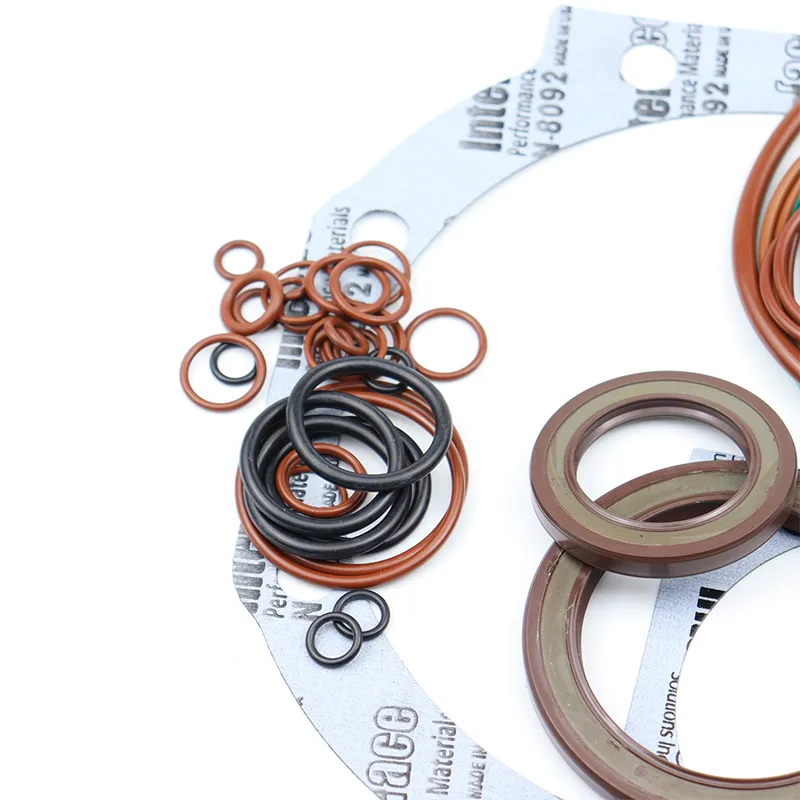Նյմ . 09, 2024 02:15 Back to list
Hydraulic Cylinder Sealing Kit for Efficient Performance and Durability
Understanding Hydraulic Cylinder Oil Seal Kits
Hydraulic systems are integral to many industries, providing the necessary power to move and control machinery with precision and efficiency. At the heart of these hydraulic systems are hydraulic cylinders, and one of the crucial components of a hydraulic cylinder is the oil seal. This is where hydraulic cylinder oil seal kits come into play. In this article, we will explore the importance, components, and maintenance of hydraulic cylinder oil seal kits.
Importance of Hydraulic Cylinder Oil Seal Kits
Hydraulic cylinder oil seal kits are designed to prevent fluid leakage, protect internal components from contaminants, and maintain system pressure. The primary function of the seals is to provide a barrier that stops hydraulic fluid from escaping the cylinder during operation and prevents dirt and debris from entering. If the seals fail, it can lead to hydraulic fluid loss, reduced efficiency, and potential damage to the cylinder and surrounding equipment.
Proper sealing is essential for the effective operation of hydraulic systems. A leak in the sealing can not only lead to a loss of power but also pose safety hazards. In industries where hydraulic cylinders are used extensively—such as construction, manufacturing, and transportation—maintaining the integrity of oil seals is crucial for overall operational efficiency and safety.
Components of a Hydraulic Cylinder Oil Seal Kit
A typical hydraulic cylinder oil seal kit includes various types of seals, rings, and gasket materials designed specifically for use in hydraulic applications. Key components include
1. O-Rings These are circular seals that fit into grooves and compress when the cylinder is assembled, creating a tight seal against fluid leakage.
2. Rod Seals Located on the outer part of the cylinder, rod seals prevent hydraulic fluid from leaking out around the rod as it extends and retracts.
3. Piston Seals These seals sit between the cylinder and the piston, allowing for efficient movement while preventing fluid from escaping.
4. Backup Rings Often used in conjunction with O-rings, backup rings support the oring and prevent it from being extruded in high-pressure applications.
5. Gaskets These flat sealing devices are used at the junctions of various components to provide a leak-proof fit.
6. Wear Rings These components help maintain proper alignment and reduce wear of the piston and cylinder walls, ensuring smooth operation.
The specific components included in a hydraulic cylinder oil seal kit can vary based on the size and design of the cylinder, as well as the operating conditions it needs to endure
.hydraulic cylinder oil seal kit

Selecting the Right Oil Seal Kit
When choosing an oil seal kit, it is essential to consider several factors
- Material Compatibility Seals are made from various materials, including rubber, polyurethane, and PTFE (Teflon). The choice of material should depend on the type of hydraulic fluid, temperature ranges, and environmental conditions.
- Size and Specifications Ensuring that the seal kit matches the specifications of the hydraulic cylinder is critical. This involves measuring diameter, width, and groove dimensions accurately.
- Operating Conditions Consider factors such as pressure, temperature, and the type of application. For instance, high-performance seals may be required for extreme conditions or high-speed applications.
Maintenance Tips for Hydraulic Cylinder Oil Seal Kits
Proper maintenance can significantly extend the life of hydraulic cylinder oil seals. Here are some maintenance tips
1. Regular Inspections Routine checks can help identify wear and tear before they lead to significant failures. Look for signs of leakage or damage on the seals.
2. Fluid Quality Use only the recommended hydraulic fluids and ensure they are clean and free from contaminants, as dirt can accelerate seal wear.
3. Correct Installation Ensure seals are installed correctly to avoid damage. Use proper tools and techniques to prevent pinching or stretching.
4. Monitor Operating Conditions Keep track of temperature and pressure levels. Extreme conditions can lead to premature seal failure.
5. Replace When Necessary If leaks are detected or performance drops, it may be time to replace the oil seal kit, even if the seals do not appear visibly damaged.
Conclusion
Hydraulic cylinder oil seal kits are vital for the efficient and safe operation of hydraulic systems. Understanding their components, selection criteria, and maintenance practices can help ensure longer service life and reliability of hydraulic equipment. By prioritizing the integrity of oil seals, industries can optimize performance and reduce downtime, ultimately leading to increased productivity and cost savings.
-
Unlocking the Potential of Hydraulic Systems with Essential Sealing Solutions
NewsAug.06,2025
-
Unleash the Power of Your Hydraulic Systems with Our Premium Seal Kits
NewsAug.06,2025
-
Specialized Hydraulic Seal Kits for Breakers, Pistons, and Presses
NewsAug.06,2025
-
Revitalize Hydraulic Systems with Premium Repair and Seal Kits
NewsAug.06,2025
-
Fortify Your Cylinders with Premium Sealing Solutions
NewsAug.06,2025
-
Elevate Hydraulic System Reliability with Specialized Seal Kits
NewsAug.06,2025
-
TCN Oil Seal Metal Ring Reinforcement for Heavy Machinery
NewsJul.25,2025
Products categories
















